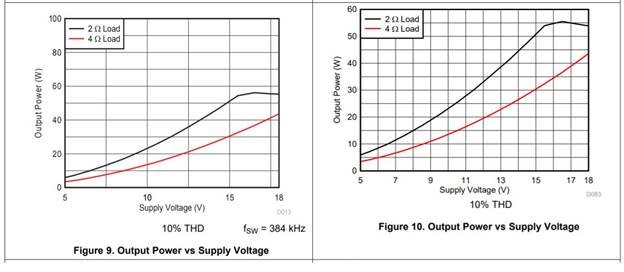Other Parts Discussed in Thread: TAS6424MSQ1EVM
Hı Team,
Can you please check and advise with following request:
"
The other issue is about the TAS6424M-Q1 4-channel speaker amplifier that we want to use in the infotainment system.
We use the amplifier supply voltage directly as it comes from the vehicle battery, as TI uses in the TAS6424MSQ1EVM evaluation module, which is the Reference design for this integration. Vehicle battery varies between 9-16V and is given as 12V nominally.
When viewed from the integral datasheet, they made a connection between the output power and the supply voltage as shown in the graph below. For the 4 Ohm speaker with 12W for 9V supply and 35W for 16V supply.

Our Comment: Since this amplifier is a closed loop structure, we thought that the graph above represents the maximum output power, since it compensates the error by receiving feedback from its output. Thus, we think that there will be no change in sound level for every situation between 9-16V where a sound level below 12W output power is desired. When the sound level is above 12W, we evaluated that there will be a decrease in the sound with the decrease of the battery voltage.
We want to confirm this issue. Can you help me?
"
Thanks in advance
Best Regards
Furkan Sefiloglu

